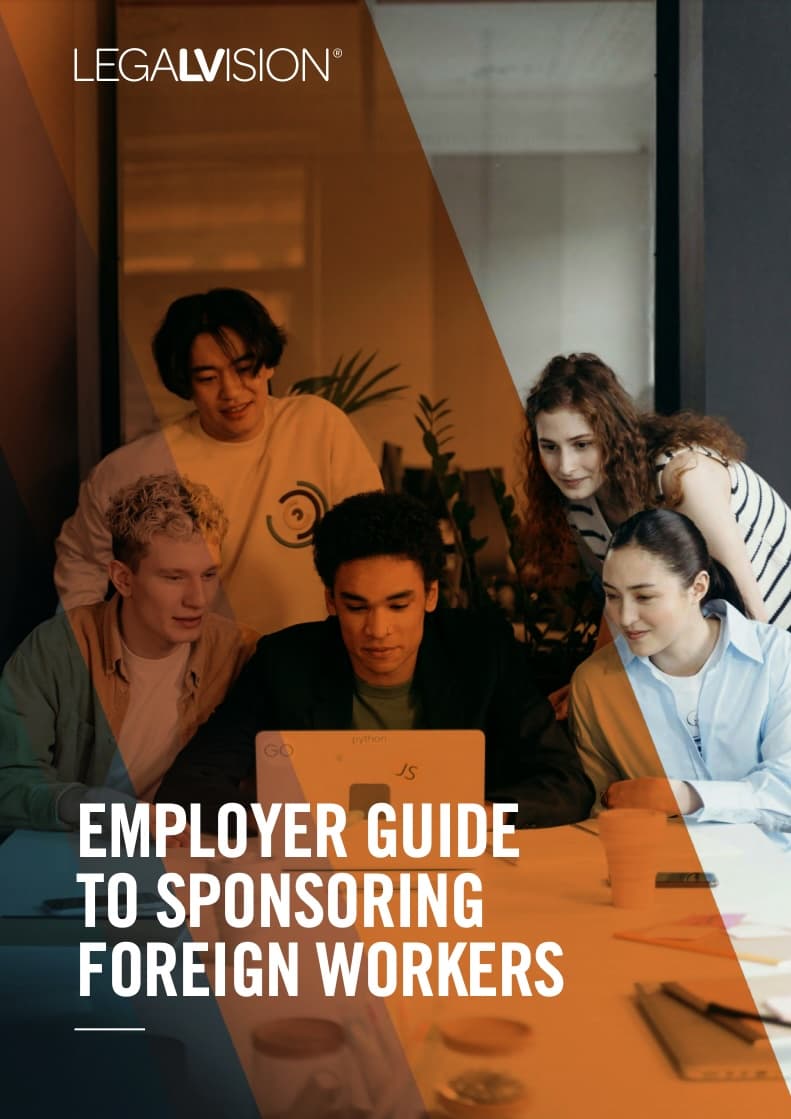If you are interested in living and working in Australia, you may be eligible for the Global Talent Visa (GTV). The visa is designed to attract highly qualified, experienced and exceptionally talented individuals to live and work in Australia as permanent residents. In particular, it targets those who can demonstrate the relevant skills in several targeted health, technology, scientific and financial sectors. The GTV is part of a federal government initiative to help support post-COVID recovery and boost local jobs. The Australian Government announced that there are 5000 places available to GTV applicants for 2022-2023. This article will explain the benefits, eligibility criteria, process and costs associated with the GTV.
Benefits of a Global Talent Visa
Suppose you meet the eligibility criteria. If so, the GTV is an extremely attractive option over other permanent residency visas (such as the skilled independent visa subclass 189 and 190, or employer-sponsored visa subclass 186).
Suppose your employer is not willing to nominate you for permanent residency under subclass 186, and you meet the GTV eligibility criteria. In that case, this may be an option for you to remain in Australia permanently.
Eligibility Criteria
If you are a highly skilled candidate and demonstrate your international recognition and achievements, the GTV is an attractive option. Your eligibility for this visa is determined based on the criteria that you:
- have an internationally recognised record of exceptional and outstanding achievements in a profession, sport, the arts, or academia and research;
- are prominent in your field of expertise;
- would be an asset to the Australian community;
- would have no difficulty in obtaining employment, or becoming established independently, in Australia in your area of talent;
- have an organisation or individual in Australia with a national reputation in the same field, who can attest to your record of achievement;
- have completed the approved Form 1000;
- have a current or potential income of AUD $162,000;
- meet onshore qualifying visa requirements including Schedule 3 (if applicable); and
- make your application concerning one of the target sectors set out below, or a related sector.
Target Sectors
| Original Target Sectors | New Target Sectors from December 2020 |
| AgTech | Agri-food and AgTech |
| FinTech | Financial Services and FinTech |
| MedTech | Health Industries |
| Cyber Security | DigiTech |
| Space and Advanced Manufacturing | Defence, Advanced Manufacturing and Space |
| Energy and Mining Technology | Energy |
| Quantum Information, Advanced Digital, Data Science and ICT | Circular Economy |
| Infrastructure and Tourism | |
| Resources | |
| Education |
Unlike the skilled independent visas (subclass 189, 190 and 491) and the employer-sponsored visas (subclass 482 and 186), there is no occupation list for the GTV.
The Department expanded the target sectors on 17 December 2020 per Direction 89 (and subsequently replaced Direction 85, which commenced on 4 November 2019).
Please note that the criteria for the GTV are strict. For example, you are no longer eligible for the GTV solely based on a:
- Master by Coursework;
- Master by Research; or
- Bachelor (Honours) qualification.
Additionally, work experience alone is unlikely to be sufficient. You will need to be prominent in your field and prove a record of international achievements or recognition.
Visa Process
Whether onshore or offshore, there are several steps in securing the GTV. For example, you must:
- submit an Expression of Interest (EOI) to the GTIP and wait to receive a unique identifier number (UIN);
- secure a nominator and complete Form 1000; and
- submit a visa application for subclass 858 – Global Talent Visa (GTV).
Seeking Nomination for the Global Talent Visa
You are required to select a nominator and have them complete Form 1000 at the time of lodging your GTV application. For example, a nominator must be an:
- Australian citizen;
- Australian permanent resident;
- eligible New Zealand citizen; or
- Australian organisation.
Only one nominator is necessary for your application. If you provide more than one nomination, the Department may request that you select only one nominator. However, you can provide as many letters of support as you like from:
- Australian citizens;
- Australian organisations; and
- internationally recognised individuals or organisations in your area of expertise.
When submitting your EOI to the GTIP, you are not required to have a nominator. However, it strengthens your EOI to include a completed Form 1000 identifying an appropriate nominator. You can change your nominator between submitting an EOI and lodging the GTV application. However, once you submit your GTV application with a completed Form 1000 (identifying your nominator), you cannot change nominators.
Processing Times
After submitting an EOI to the GTIP, it can take anywhere from a few days to a few months to receive a UIN.
After receiving a UIN, you can proceed to lodge a GTV application. Once you submit the GTV application, processing times are between one and seven months. This is a relatively faster turnaround for applicants to achieve Australian permanent residency. In contrast, the employer nomination scheme visa can take up to fourteen months, and the skilled nominated visa can take fifteen months.
If you are onshore, you can now apply for the GTV if you hold a substantive visa or a bridging visa A, B or C. A substantive visa is any visa that is not a bridging visa. Historically, onshore applicants with a visitor visa or bridging visa were not permitted to apply for the GTV. However, new regulations introduced on 14 November 2020 have removed these barriers and allow more eligible applicants to apply.
Visa Application Costs
As of 1 July 2021, the following GTV application fees apply.
| Primary Applicant | $4,305 |
| Applicant over 18 | $2,155 |
| Applicant under 18 | $1,080 |
Furthermore, you should factor in additional costs, such as:
- health examinations;
- police checks; and
- translations of documents.

Sponsoring overseas workers as an Australian business is complicated. Let us simplify it for you with this free employer guide.
Key Takeaways
As an exceptional candidate with expertise in one of the target sectors, you may be eligible to apply for the Global Talent Visa. The visa offers a priority processed and streamlined pathway to Australian permanent residency. The Australian Government is highly invested in the GTIP as part of its initiatives to assist Australia’s economic recovery post-COVID-19.
If you are considering applying for this visa, our experienced immigration lawyers can assist as part of our LegalVision membership. For a low monthly fee, you will have unlimited access to lawyers to answer your questions and draft and review your documents. Call us today on 1300 544 755 or visit our membership page.
Frequently Asked Questions
The Global Talent Visa offers a pathway to permanent residency in Australia for talented applicants.
Yes, you will need an appropriate Australian nominator to obtain the visa.
After submitting an EOI to the GTIP, it can take anywhere from a few days to a few months to receive a UIN. After receiving a UIN, you can proceed to lodge a GTV application. Once you submit the GTV application, processing times are between one and seven months.
We appreciate your feedback – your submission has been successfully received.












